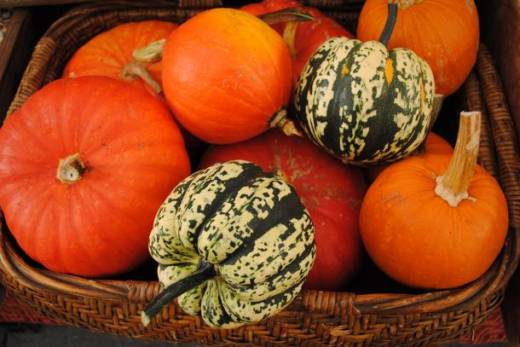With fall officially here, zucchini, crooknecks, and other summer squash will soon be disappearing from farmers market stands, making way for their heartier cucurbit cousins: the winter squash.
The terms winter squash and summer squash originate from a time when human survival was more dependent on the seasons. Winter squash have a long growing season and are harvested during the fall when their rinds have hardened. They store well without refrigeration throughout fall and winter and into spring, and historically they helped keep produce on the table in leaner months.
The flesh of winter squash is sweeter and much denser than the summer squash, making them a belly-filling basis for soups, roasted vegetable dishes, and pies. As decorative as they are delicious, winter squash can be found in various colors, sizes, and flavors.
Here are some common hard squash (and a few exotic favorites) you’ll find at the farmers market in the coming months. Visit the CUESA website for a listing of which of our farms grow which varieties, as well as some delicious recipes.
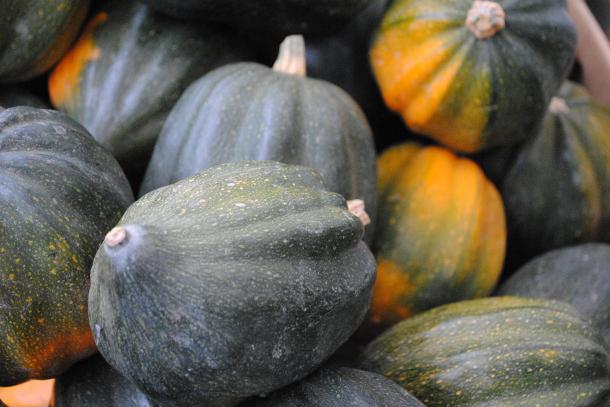
Acorn: These small, ridged squash are popular and versatile, ideal for just about any squash preparation. With thick skin and mild orange flesh, Acorns are typically deep green and orange, but can be found in other colors, like gold or white. The small, colorfully striped Carnival squash, a hybrid of the Acorn and the Sweet Dumpling, is perfect for stuffing.
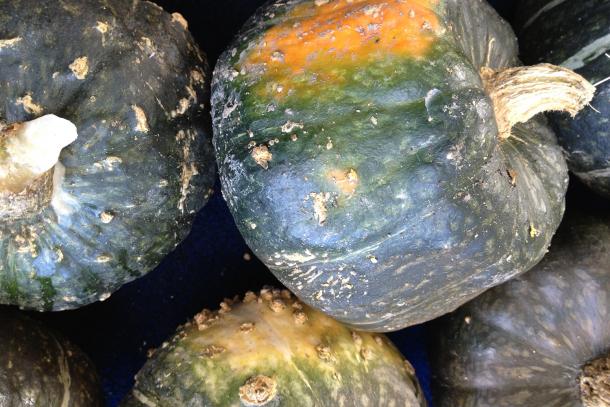
Buttercup: A popular variety of Turban squash (see below), the Buttercup is squat and squarish with faintly streaked, dark green skin. The flesh is sweet-potato-like and somewhat dry.
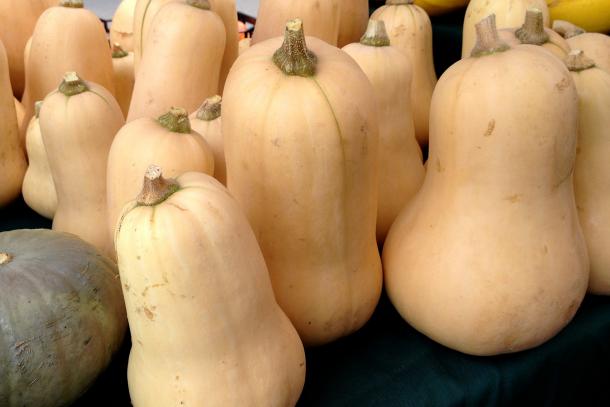
Butternut: The pear-shaped Butternut has dense, sweet, and nutty flesh and only a few seeds, making it a popular cooking squash to roast, mash, or purée in soups. To remove its hard exterior, first cut it in half and roast it, then remove the skin with a vegetable peeler. Waltham is the classic cream-colored variety.
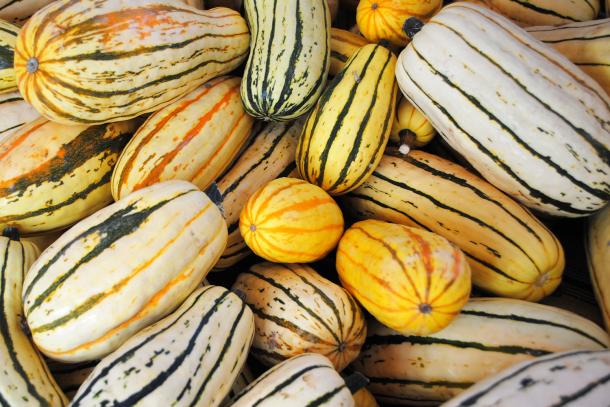
Delicata: The small, oblong Delicata is a single-serving squash. Just cut in half, scoop out the seeds, and roast with a bit olive oil, salt, and pepper, or bake stuffed with the savory filling of your choice. No need to peel; the thin, green-and-gold-striped skin is edible, too. Sweet and creamy, it has earned itself the nickname “sweet potato squash.”
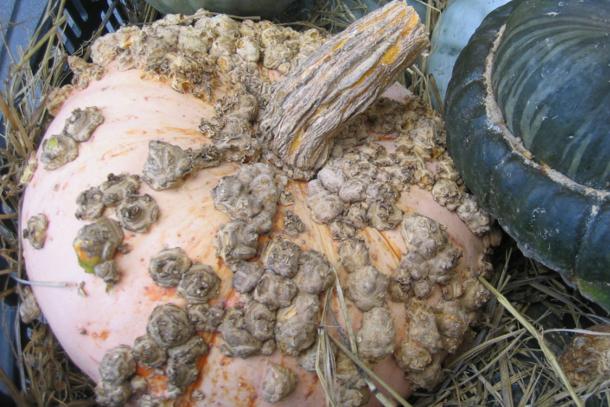
Galeux d’Eysines: Commonly known as the “peanut pumpkin,” this striking French heirloom has a salmon-colored skin covered in barnacle-like knobs. The growths are produced through a process known as “corking,” whereby the sugars break through the skin and exude to form peanut-shell-like scabs, a sign of the squash’s sweetness.
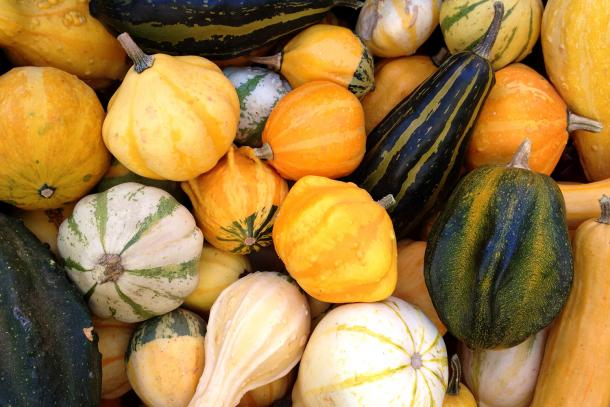
Gourds: Gourds have been used by humans throughout history as musical instruments, art, tools, and food. Available in a gourd-eous variety of colors and shapes, most gourds you find at the market these days are ornamental rather than edible, so be sure to ask your farmer before roasting them up.
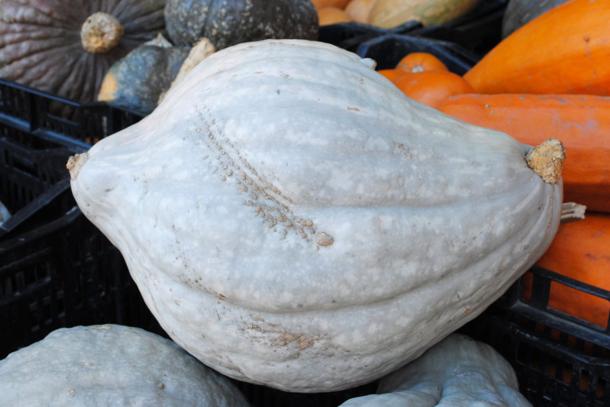
Hubbard: With blue-gray, bumpy skin and a teardrop shape, this heavyweight of the squash family has a pumpkin-like flavor. The Hubbard’s family-size heft makes it a favorite for roasting, and thus a great turkey substitute at a vegetarian Thanksgiving.
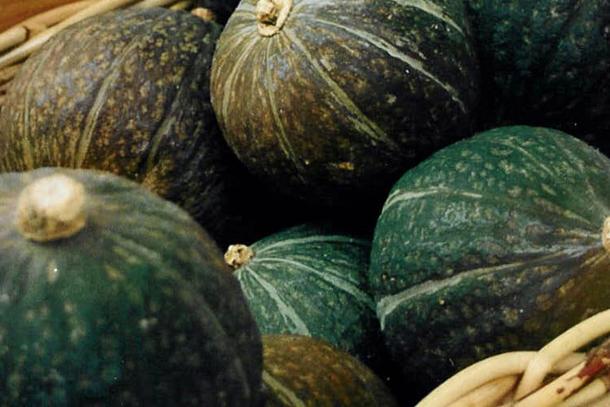
Kabocha: Similar to the Buttercup, this Japanese variety (kabocha is the generic term for squash in Japanese) has dense flesh and a hard skin, which softens when cooked. The deep yellow flesh is a bit flaky but very sweet. Bake it or roast with lots of butter or oil.
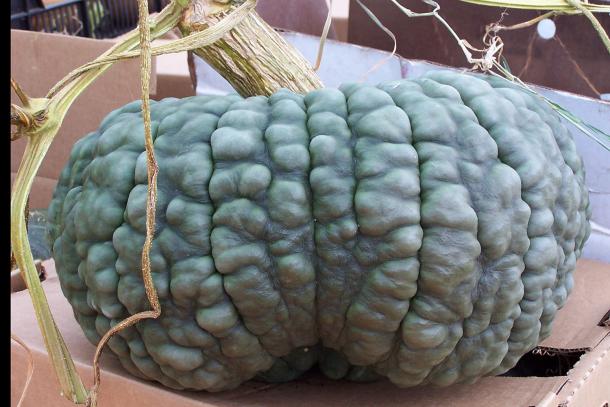
Marina di Chioggia: This heirloom hails from the coast of Italy, from the same village as the candy-striped Chioggia beet. Pumpkin-shaped, with a warty, dark blue-green exterior, the Marina di Chioggia has a decorative appearance, but its sweet flesh is especially good for ravioli and gnocchi filling.
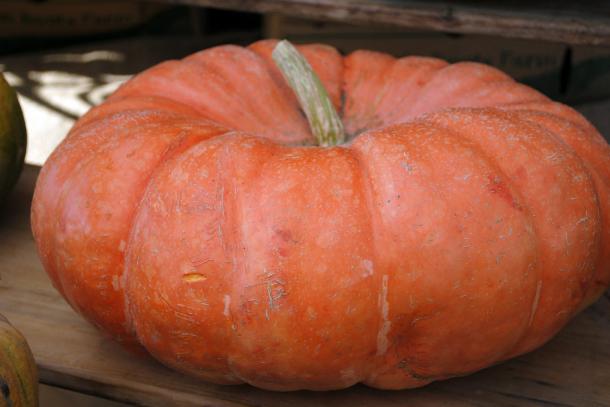
Pumpkin: Pumpkins generally fall into two categories: those for carving and those for eating. Field pumpkins sold for Halloween jack-o’-lanterns usually lack flavor, while Sugar Pie pumpkins hold true to their name. Richly hued French heirlooms like the Cinderella pumpkin (Rouge Vif d’Etampes) and Musquee de Provence are beautiful to display, but they’re also sweet and delicious roasted.
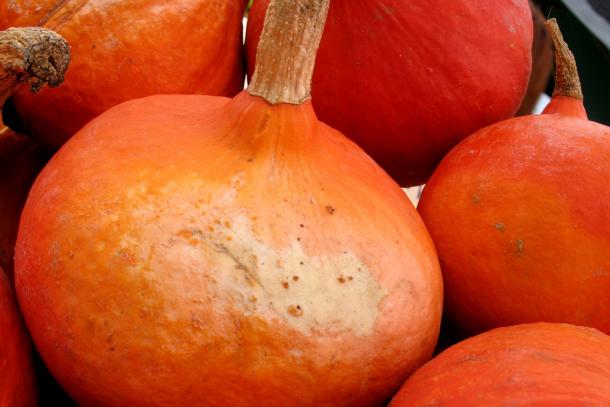
Red Kuri: Resembling a small Hubbard with deep red-orange skin, the Red Kuri is a Japanese squash with a chestnut-like flavor. It’s a versatile fruit, and its bowl-like seed cavity works well for stuffing.
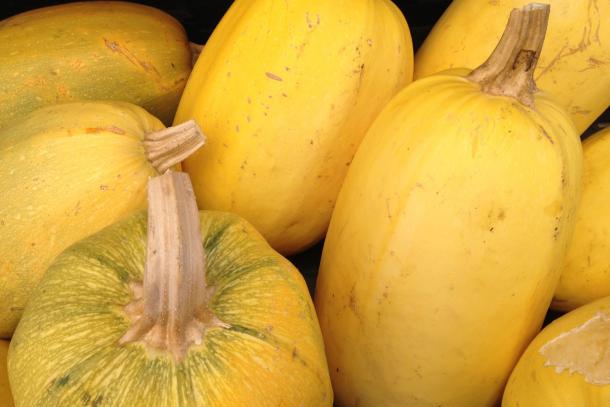
Spaghetti: Light yellow, large, and oblong, the Spaghetti squash is another classic variety. When cooked, the light, stringy flesh gives way to strands that make a delicious gluten- and carb-free pasta substitute. Just scrape the flesh with a fork.
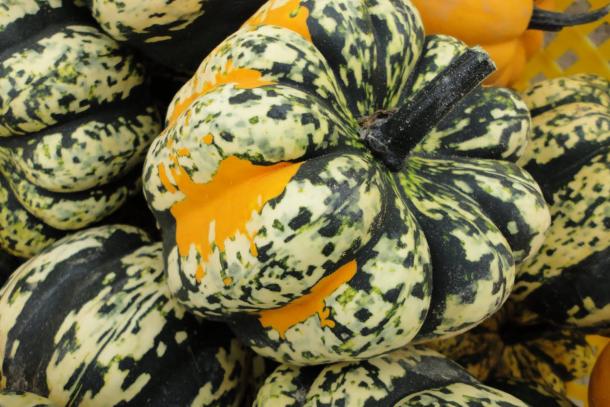
Sweet dumpling: These small, squat cucurbits have variegated skin and sweet, tender orange flesh, which, like the Delicata, makes them easy to cook as a single-serving squash, stuffed, or served whole.
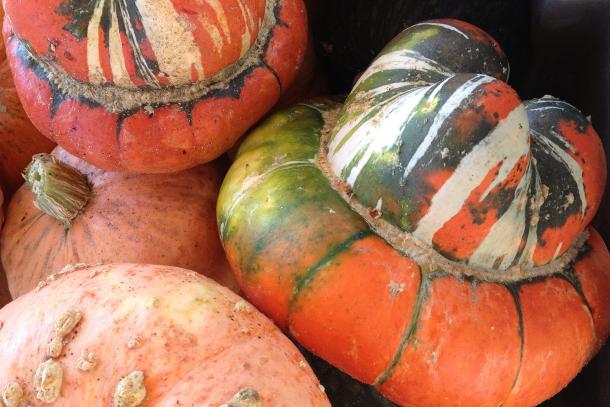
Turban: Also known as Turk’s Cap, this bulbous, mushroom-shaped cucurbit makes a colorful addition to any fall centerpiece. Not to be mistaken for a decorative gourd, Turbans are edible, with a sweet, if mild, flavor. A Turban’s flesh is great roasted and made into a soup, and its rind can be used for a tureen.
